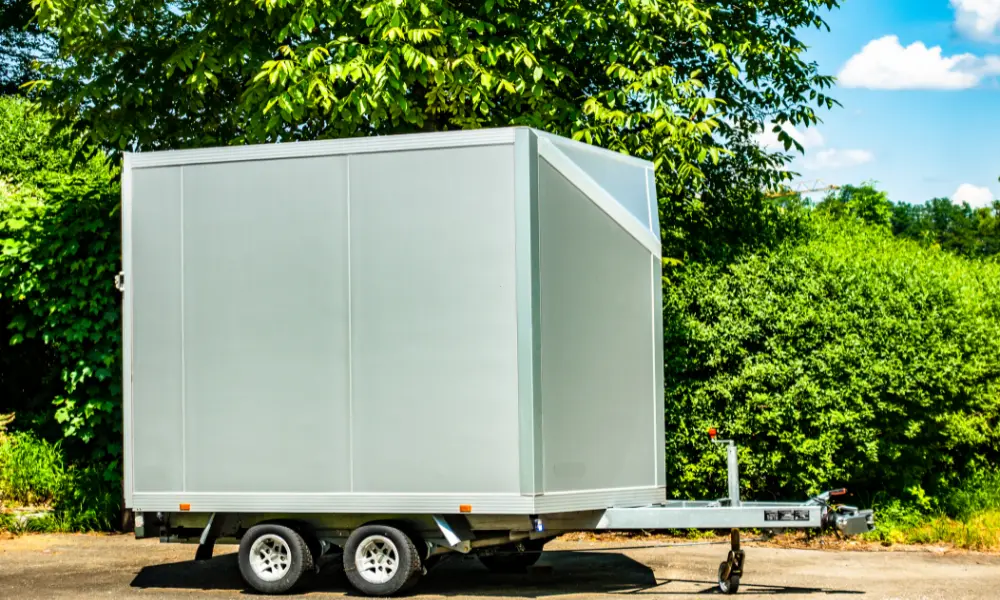Living in Massachusetts means you’re likely familiar with the yearly vehicle inspection. In Massachusetts, all vehicles must pass an annual inspection that includes both safety and emissions checks. Ensuring your car meets these requirements not only keeps you safe but also helps maintain cleaner air for everyone.
Overview of MA Vehicle Inspection Requirements
In Massachusetts, vehicle inspections are essential to ensure safety and reduce air pollution. The program includes both a safety inspection and an emissions test.
Purpose of the Safety Inspection Program
You need to get your vehicle inspected every year in Massachusetts. This safety inspection checks key systems to make sure your car is safe to drive. Key systems include brakes, lights, steering, and tires.
The inspection takes about 12 minutes. It covers 14 key systems of the vehicle. If any of these systems fail, your vehicle won’t pass the inspection. Fixing any issues promptly helps keep everyone safe on the road. Licensed inspection stations all over the state can perform these checks.
Emissions Testing Background
The emissions test focuses on the emissions control system to check for pollutants. Emissions testing helps reduce air pollution by ensuring your vehicle’s engine runs cleanly. If your vehicle fails this test, it may emit too many pollutants like carbon monoxide and hydrocarbons.
Vehicles registered in Massachusetts must pass an emissions test every year. The cost is typically $35 for most vehicles. If your car fails, you’ll need to get it repaired and re-tested. This process helps keep air pollution levels down and your car running efficiently.
Motorcycles also need an emissions test but cost less, around $15. Commercial vehicles might have higher fees but also need to meet federal requirements. These requirements make sure pollution is controlled effectively.
Vehicle Inspection Process
When you bring your vehicle for inspection in Massachusetts, it’s helpful to know what to expect. This includes understanding the documentation needed and the fees involved.
What to Expect at the Inspection Station
Upon arriving at an inspection station, a technician will greet you. The technician will guide you to park your car in the designated inspection area. Your vehicle will undergo both a safety inspection and an emissions test.
During the safety inspection, the technician checks critical parts of your car, like brakes, lights, and tires. They also ensure that all safety features are functioning correctly. The emissions test measures the pollutants your car emits to ensure they meet state standards.
Once the inspection is complete, you’ll receive an inspection report detailing any issues found. If your vehicle passes, the technician will place a new inspection sticker on your windshield. This sticker shows the month the last one expired, as per the Massachusetts Vehicle Check program.
Documentation and Fees
Before the inspection, gather the necessary documents. You’ll need your vehicle’s registration and proof of insurance. These documents confirm that your car is legally allowed on the road and that it’s covered by insurance.
Most vehicle inspections in Massachusetts cost $35. Payment is made directly to the inspection station. However, be aware that inspection stations offering commercial vehicle checks might charge more. For motorcycles, the fee is typically $15.
For more information on fees, you can refer to Mass Vehicle Check FAQs. Bringing the correct documentation and being prepared to pay the fee will make the inspection process smoother.
Safety Inspection Checklist
When preparing your vehicle for a safety inspection, there are several key areas to check. Ensuring these parts are in good condition helps keep your vehicle safe and avoids potential fines or penalties.
Windshield and Wipers
Your windshield should be free of cracks and chips that could obstruct your view. Even small damages can worsen over time, posing a risk. Your windshield wipers must be in good working order to clear rain, snow, and debris. Make sure they are not brittle or torn. Proper visibility is crucial for safe driving, especially during inclement weather conditions.
Lights, Signals, and Horn
Check all your lights and signals, including headlights, brake lights, turn signals, and hazard lights. They must all function properly to ensure you are visible to other drivers. Don’t forget to test your horn; it should be loud enough to alert others in case of emergencies. Functioning lights and signals are vital for preventing accidents.
Mirrors and Seat Belts
Ensure that all mirrors (rearview and side mirrors) are securely attached and provide a clear view behind and around your vehicle. Your seat belts should lock properly and retract smoothly. They are essential for driver and passenger safety, and they must be in excellent condition to pass the safety inspection.
Brakes and Tires
Your brakes must operate efficiently without any grinding or squealing noises. Check the brake pads and rotors for wear. The tires should have a tread depth greater than 2/32 of an inch and be free of cuts or punctures. Proper tire pressure is also crucial. Effective brakes and well-maintained tires are key for safe driving.
Steering and Suspension
Inspect the steering system for any looseness or unusual noises. Your vehicle should not pull to one side. The suspension must be in good shape to ensure a smooth and controlled ride. Look for any signs of wear or damage in the shocks, struts, and other suspension components.
Bumpers and Body
Your bumpers should be securely attached and free from significant damage. Check the vehicle’s body for rust, holes, and sharp edges that could cause injury or fail the inspection. Keeping your vehicle’s exterior in good condition not only enhances its appearance but also ensures it meets safety standards.
Emissions Inspection Criteria
In Massachusetts, vehicles must undergo annual emissions tests to ensure they meet environmental standards. This includes checks on various components to reduce pollution and improve air quality.
On-Board Diagnostic System Check
The On-Board Diagnostic (OBD) system is a key part of emissions testing. For vehicles made after 2008, this system monitors the engine and emissions control systems. It can detect issues that might increase pollution.
When you go for an emissions test, the technician will connect a device to your vehicle’s OBD port. This device reads codes to find problems. If your “check engine light” is on, your car will likely fail the test. Fixing these issues is crucial to passing the inspection and keeping your vehicle’s emissions low.
Tailpipe Emissions Assessment
The tailpipe emissions test measures the pollutants that come out of your vehicle’s exhaust. This test is more common for older cars and diesel vehicles. Technicians use a probe to collect a sample of your car’s exhaust while the engine is running.
They analyze this sample for harmful substances like carbon monoxide and nitrogen oxides. Diesel vehicles may also undergo an opacity test. This test checks the smoke’s opacity, helping ensure the exhaust isn’t too thick and polluting. Cars that don’t meet the standards must be fixed, which could involve repairing or replacing parts like the catalytic converter.
Visual Inspection for Emissions Components
A visual inspection ensures that all emissions control components are present and functioning. Technicians will check key parts like the catalytic converter, exhaust system, and other components designed to reduce emissions.
They look for signs of tampering or damage. For instance, removing the catalytic converter to improve performance will cause you to fail the inspection. Any finding of bypassed or damaged components means you must repair or replace them to meet regulations and pass the inspection.
Special Cases in Vehicle Inspections
When it comes to vehicle inspections in Massachusetts, certain types of vehicles have unique requirements. Whether you’ve just bought a new car, drive a commercial vehicle, ride a motorcycle, or operate a heavy-duty truck, understanding these specific regulations is vital.
Newly Purchased Vehicles
If you’ve recently purchased a vehicle, it’s essential to get it inspected within seven days of registration. This ensures that your new car meets all safety and emissions standards. You can visit any of the 1,800 licensed inspection stations in Massachusetts for this service.
If your vehicle was previously registered in another state, make sure it complies with Massachusetts inspection requirements. The inspection includes checking the brakes, tires, lights, and emissions control system.
Commercial and Fleet Vehicle Inspections
Commercial vehicles and fleets have stricter inspection standards. Each commercial vehicle must be inspected every year and may incur higher inspection costs. Fleet owners should maintain regular inspection schedules to keep their vehicles compliant with both state and federal regulations.
Depended heavily by businesses, commercial inspections are thorough, examining safety items like braking systems, lights, and tires. Non-compliance can result in hefty fines and could negatively impact your insurance premiums.
Motorcycle Specific Requirements
Motorcycles have unique inspection requirements differing from passenger vehicles. Each motorcycle must be inspected annually at a licensed inspection station. The inspection includes checks for tire tread depth, brake systems, and lighting.
Ensure that your motorcycle meets all specific safety standards and emissions requirements. It is advised to remove any attachments like bike racks before going in for an inspection to avoid additional delays or issues.
Requirements for Heavy-Duty Vehicles
Heavy-duty vehicles, such as trucks and buses, must adhere to stringent inspection requirements due to their size and use. These inspections often cover additional elements like commercial weight ratings and may require a Federal Motor Carrier Safety Administration (FMCSA) inspection.
Mandated by both state and federal guidelines, inspections for heavy-duty vehicles are comprehensive, examining more detailed aspects like structural integrity, emissions output, and load-handling capability. Failure to maintain these standards can lead to penalties and affect the vehicle’s roadworthiness.
Compliance with Massachusetts regulations ensures that your vehicle remains safe and legally operable on the road. For more specific guidance, always contact an authorized inspection station or refer to the official state resources.
Understanding the Results
After getting your vehicle inspected in Massachusetts, you’ll receive specific results about your vehicle’s status. These results determine whether your vehicle passes and receives a new sticker or needs further repairs due to a failed inspection.
Passing and Receiving Your Sticker
If your vehicle passes the inspection, you will get a new sticker. The sticker shows that your car is safe and meets emissions standards. It’s important to note that your new sticker will display the month when the last one expired, not the month you had the inspection.
Passing your inspection means you avoid traffic violations and fines. Failing to display an updated inspection sticker can lead to fines and might even affect your insurance rates. Keeping up with your yearly inspection ensures your vehicle stays compliant with Massachusetts regulations.
Handling a Failed Inspection
If your vehicle fails the inspection, you’ll receive a rejection sticker. This sticker means your car didn’t meet safety or emissions standards. You’ll need to fix the issues identified during the inspection to get a passing sticker.
You have some options in case of a failed inspection. You can go to a registered emissions repair facility for the necessary repairs. Once repaired, your vehicle will need a re-inspection. If your vehicle still doesn’t pass, you might be eligible for a waiver, depending on the situation.
Driving with a rejection sticker and without making necessary repairs can lead to fines and possible legal issues. Always address the problems as soon as possible to ensure your vehicle complies with state laws and remains safe to drive.















